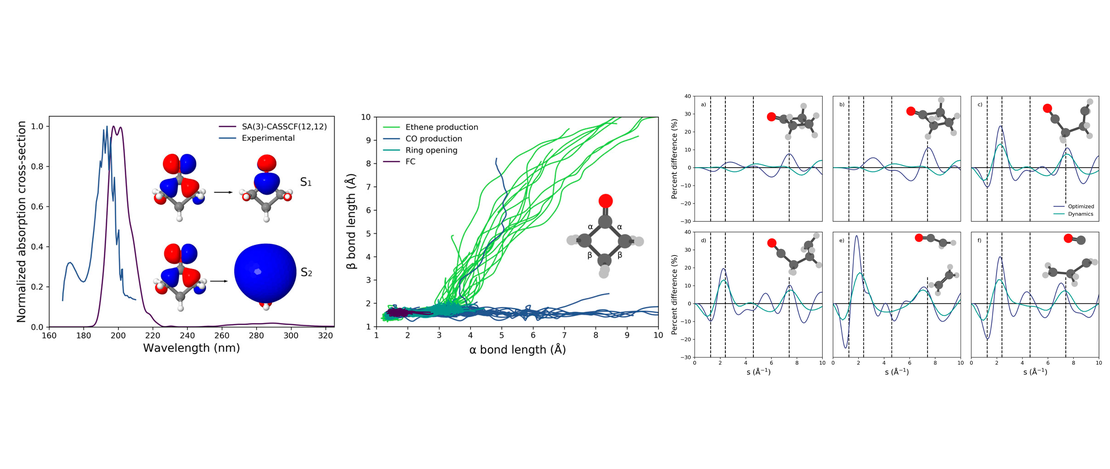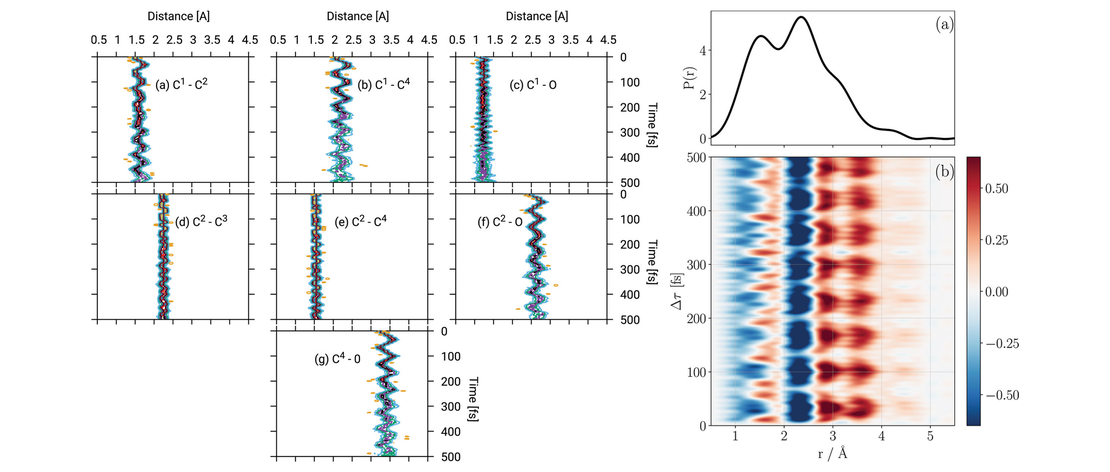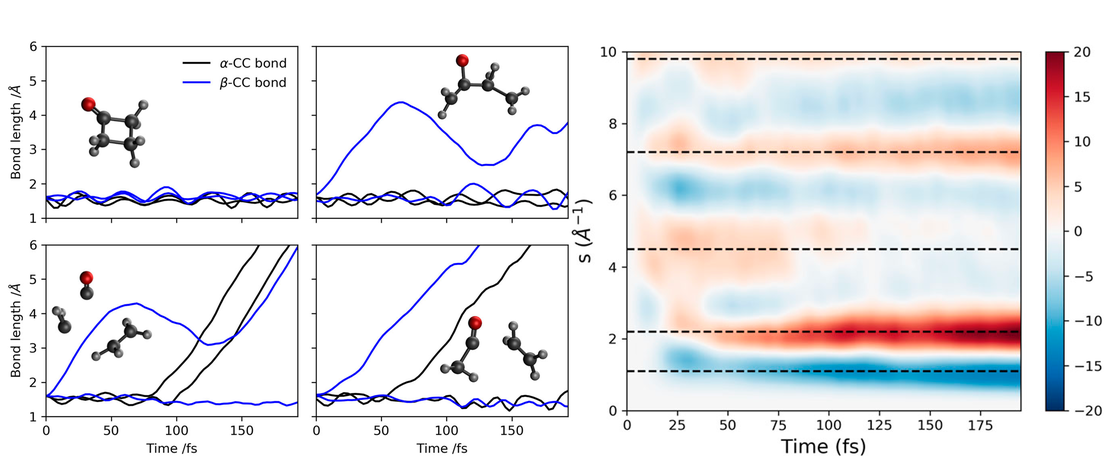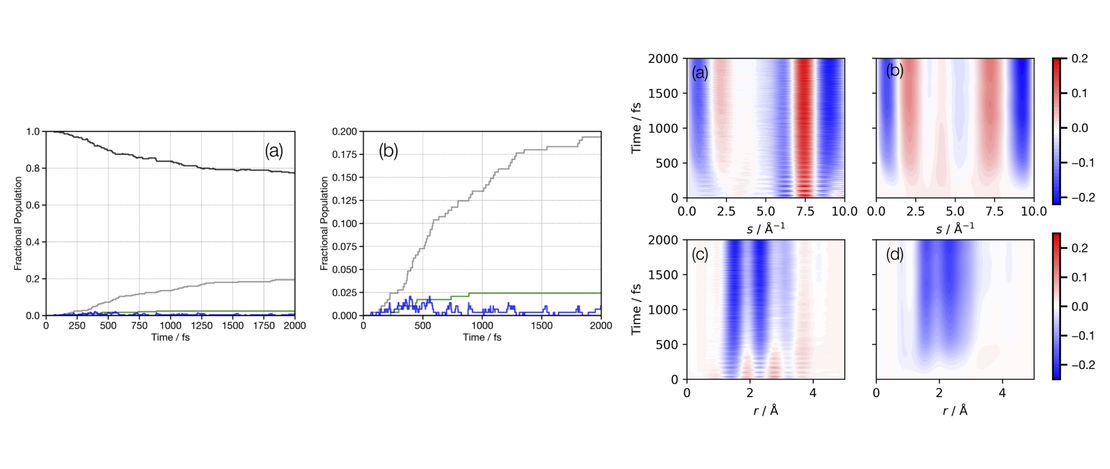
Using a multistate mapping approach to surface hopping to predict the ultrafast electron diffraction signal of gas-phase cyclobutanone
- Lewis Hutton, Andrés Moreno Carrascosa, Andrew W. Prentice, Mats Simmermacher, Johan E. Runeson, Martin J. Paterson and Adam Kirrander
- Publication , Prediction challenge
- May 28, 2024
Abstract:
Using the recently developed multistate mapping approach to surface hopping (multistate MASH) method combined with SA(3)- CASSCF(12,12)/aug-cc-pVDZ electronic structure calculations, the gas-phase isotropic ultrafast electron diffraction (UED) of cyclobutanone is predicted and analyzed. After excitation into the n-3s Rydberg state (S2), cyclobutanone can relax through two S2/S1 conical intersections, one characterized by compression of the CO bond and the other by dissociation of the α–CC bond. Subsequent transfer into the ground state (S0) is then achieved via two additional S1/S0 conical intersections that lead to three reaction pathways: α ring-opening, ethene/ketene production, and CO liberation. The isotropic gas-phase UED signal is predicted from the multistate MASH simulations, allowing for a direct comparison to the experimental data. This work, which is a contribution to the cyclobutanone prediction challenge, facilitates the identification of the main photoproducts in the UED signal and thereby emphasizes the importance of dynamics simulations for the interpretation of ultrafast experiments.
Additional Resources
DOI:
Quick Ref:
J. Chem. Phys., 2024, 160, 204307


